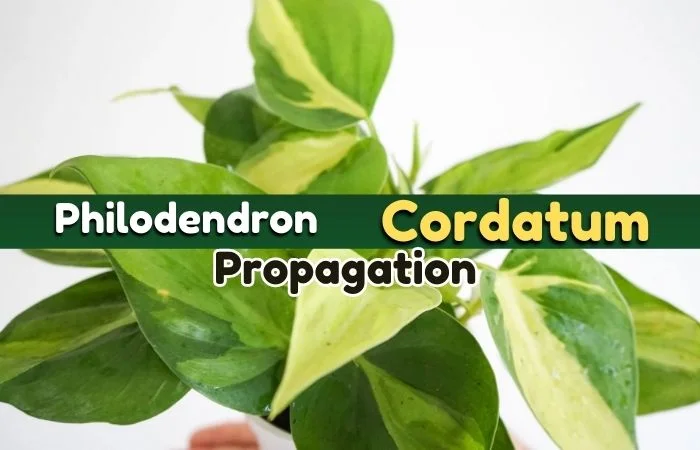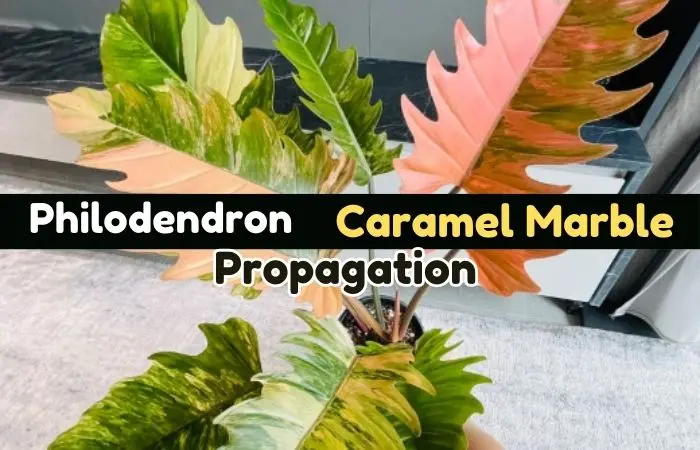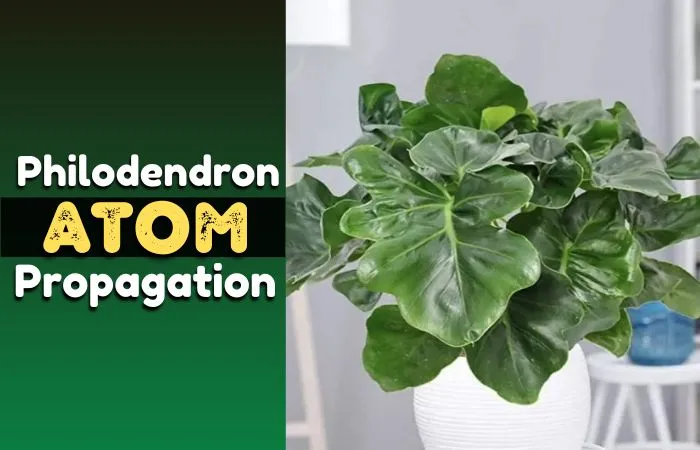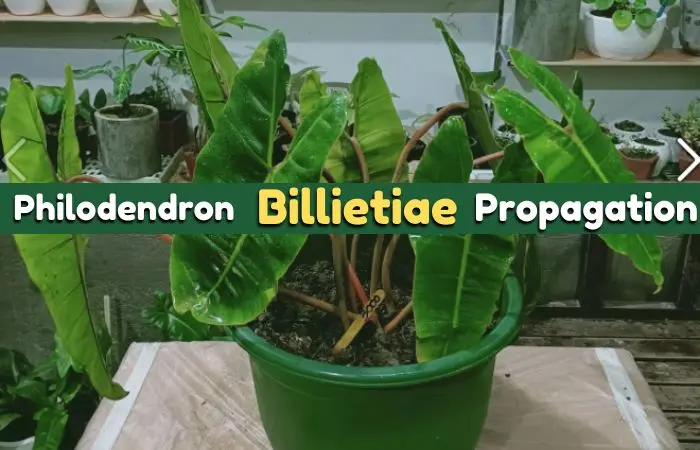Philodendron Verrucosum Propagation: Experts Don’t Want You to Know About This!
Philodendron verrucosum can be easily propagated in both soil and water. You just need to cut a 6-inch stem having at least two or three sets of leaves so that at least two leaf nodes can be grown on it. Then place it in a water pot, as it takes very well to water. You can also place roots in moss or move it straight into a new suitable potting mix and take proper care of the plant.
Philodendron verrucosum will appear with unique leaves and flowers that will make a special appearance in your house or garden. Now let’s discuss the process in more detail.
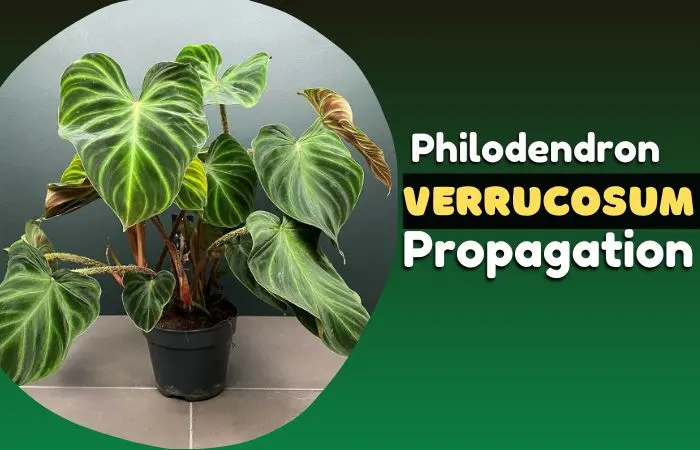
Philodendron verrucosum overview
Philodendron verrucosum is consistently chosen as a house plant because of its unique appearance. Take a quick view of some basic characteristics of it here.
| Topics | Description |
| Common name | Ecuador Philodendron, Verrucosum plant. |
| Family | Aracea. |
| Native | Costa Rica, Panama, Colombia, Ecuador, and Peru. |
| Plant type | Vine and hemiepiphyte plant. |
| Types of leaf | Large heart-shaped with deep and velvety green color accented by light green veins and a burgundy underside. |
| Foliage types | Are slightly wavy edges with white veins, flushes of reddish hues, and hairy foliage stalks. |
| Mature size | Up to 3 feet tall and 2 feet wide. |
| Time of blooming | Summer and spring. |
| The color of the flower | is white and pink. |
How do I get to know if my plant is ready to propagate?
Are you not sure if your plant is ready to propagate? Then take a look at some points to get assurance that the plant is ready to propagate before getting to the propagation method:
1. Healthy Growth: A healthy philodendron verrucosum plant can grow from 6 inches up to 3 feet long and 2 feet wide. It also has Large heart-shaped leaves with deep and velvety green colors accented by light green veins and a burgundy underside. Then you can be sure that your plant is ready to propagate.
2. Rootbound Condition: This plant has a natural tendency to get rootbound in the mature stage. If the root of the plant is formed into a dense soil there will be little space for further growth meaning it is root bound. Then you can propagate it.
3. Maturity stage: If you can see the roots coming out of the water drainage holes of the pot, then it needs repotting. And at this stage, it can be propagated.
4. Root rot condition: If you see the roots getting white-gray or blackish and damped because of the overwatering, it’s time to propagate the plant.
5. Watering condition: You may find that the soil dries faster than before. So you need to water the plant more often than before.
Here are the steps from which we can know the proper time to propagate the plant as well as repotting.
Tools needed for propagation
Sharp cutting tools: A sharp cutting scissors or a knife is a must and they have to be disinfected to avoid improper or damaged propagation systems.
Water pot: It is used in the water propagation method to do the rooting of the cuttings into the water.
Mixing/Soil pot: A mixing pot is needed in which the soil can be ready by mixing the suitable soil and fertilizer accordingly for soil propagation.
Watering can: A water can is used to keep watering the plants after a certain time to avoid the soil from drying out completely.
Hanging rope: It is used to hang the plant if it is required for proper sunlight or if the homies want to decorate the house with the plants.
How to propagate philodendron verrucosum?
Philodendron verrucosum is very easy and cost-efficient to propagate. It can be propagated by several methods. Among them, the most common methods are given below.
- Stem cutting propagation.
- Root division propagation.
Both of these methods can be done with minimal effort. In this article, detailed information on how to propagate philodendron verrucosum will be found to decorate the garden. Let’s have a look.
Stem cutting
Stem cutting is the most popular method in all other methods of propagation. Stem-cutting propagation can be done even by beginners just following a few steps. Let’s deep dive into the steps
Step-1: Selecting a healthy stem: At first, the most important work is selecting a mature and healthy stem having at least two leaves. Keep in mind that the stem has to be free of any signs of infections or disease or pests.
Step-2: Making the clean cut: After selecting the healthy stem, another important step is to make a clean cut in one stroke by using a pair of sharp and disinfected shears or a knife.
You should cut the stem about 1-2 inches below the leaf node where the leaf meets the stem. Make sure to sterilize your cutting tool before and after use to prevent any kind of infection.
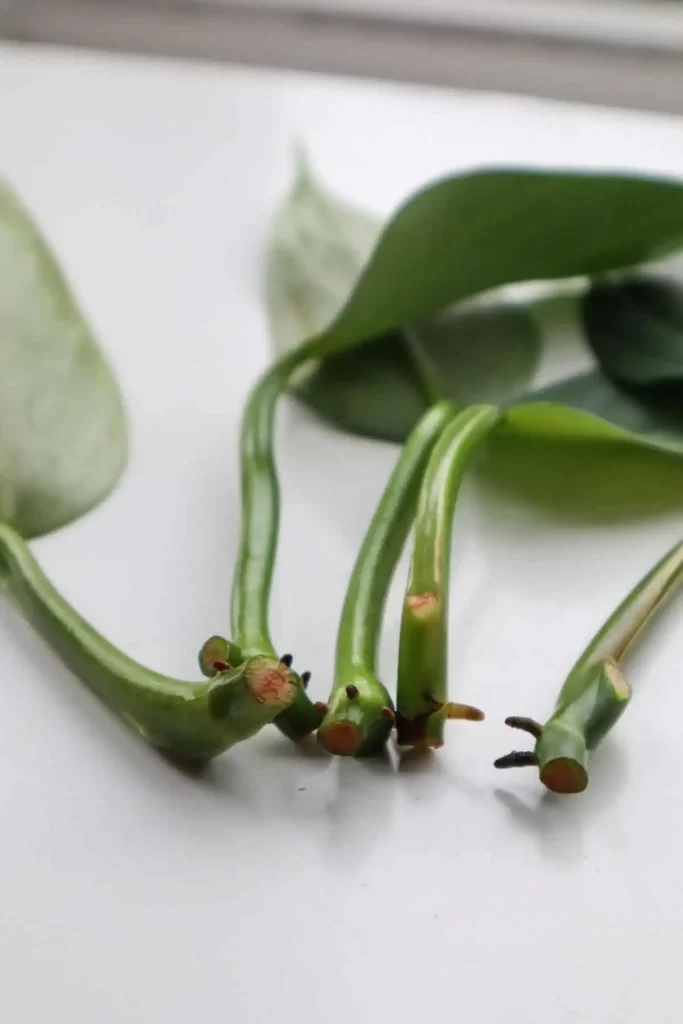
Step-3: Prepare the cutting: Then remove the lower leaves from the cutting, leaving at least two leaves at the top to focus its energy on the developing root.
Place the cut stem about 1-2 inches deep in a pot containing fresh water. Then after growing roots transfer them in a well-draining, moist, and peat-based potting mix.
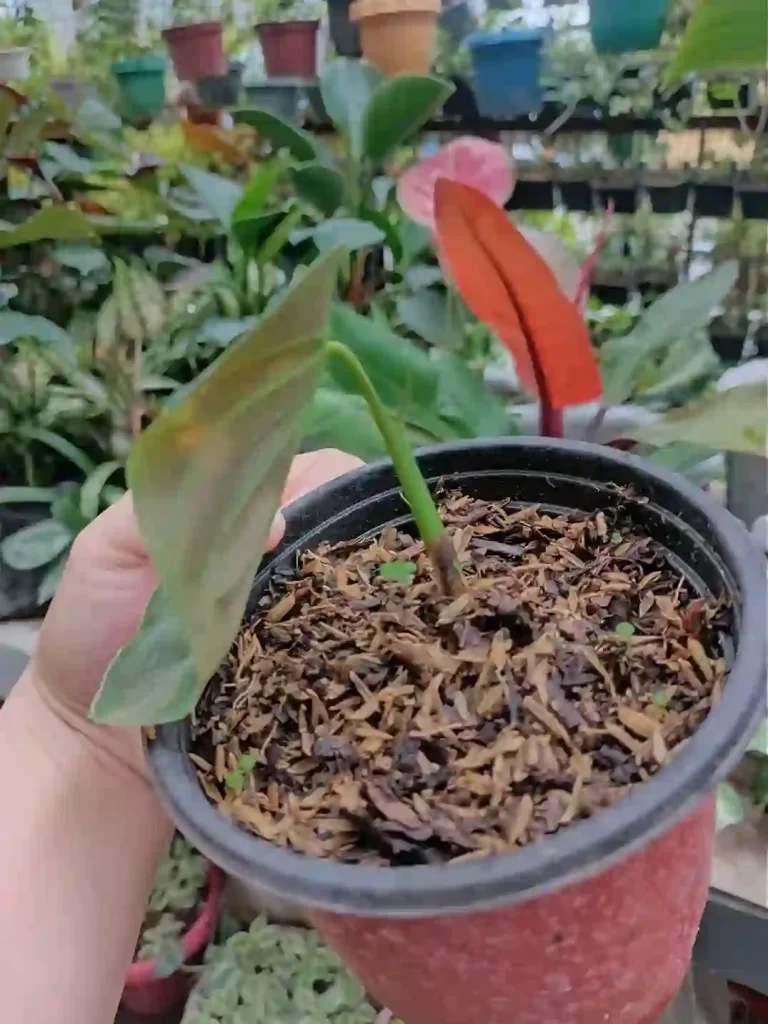
Step-4: Provide optimum conditions: Finally, you should keep in mind that the pot should be in a place having bright and indirect light. Because direct sunlight causes sunburn or damage to the plant.
You should maintain humidity and consistent moisture in the potting mix and avoid overwatering. In about 4-6 weeks your cutting may develop roots and begin to grow new leaves.
Root ball division
Philodendron verrucosum plants’ roots always help to propagate in a vast amount. Let’s try that method also.
Dividing the root ball is another excellent method to propagate this plant that involves separating the plant parts carefully to create new individual plants. Let’s go through the detailed procedure below.
Step-1: Cleaning the roots: First, remove the plant from its pot carefully and wash the soil away gently around the roots with clean water. Otherwise, it may damage the root ball and cause a hamper to the plant.
Besides, you have to remove the excess water from the roots. If excess water is present on the roots, the root ball may get rotten and propagation will be hampered.
Step-2: Identify the natural division: Then check and identify the natural divisions which usually occur at the base of the plant naturally and separate the plantlets accordingly.
Then cut the root ball into two parts. You have to use a clean, disinfected, and a sharp knife or a pair of pruning shears to make a clean cut and avoid any fungal or bacterial infections.
Step-3: Observing the cut parts: Observe the cutting to ensure each division contains a suitable amount of roots, nodes, and leaves after the cutting.
You should also assure that the divided part is free from any kind of pests or diseases or problems. Otherwise, the new plant will also get affected.
Step-4: Placing each cut part: Lastly, place each divided root ball part into individual pots containing well-draining and peat-based soil. The soil must be moist but not soggy.
Moreover, the pot should be kept in a typical humid environment having a bright place and avoiding direct sunlight. Approximately after 3 to 4 weeks, the plant will start growing new leaves.
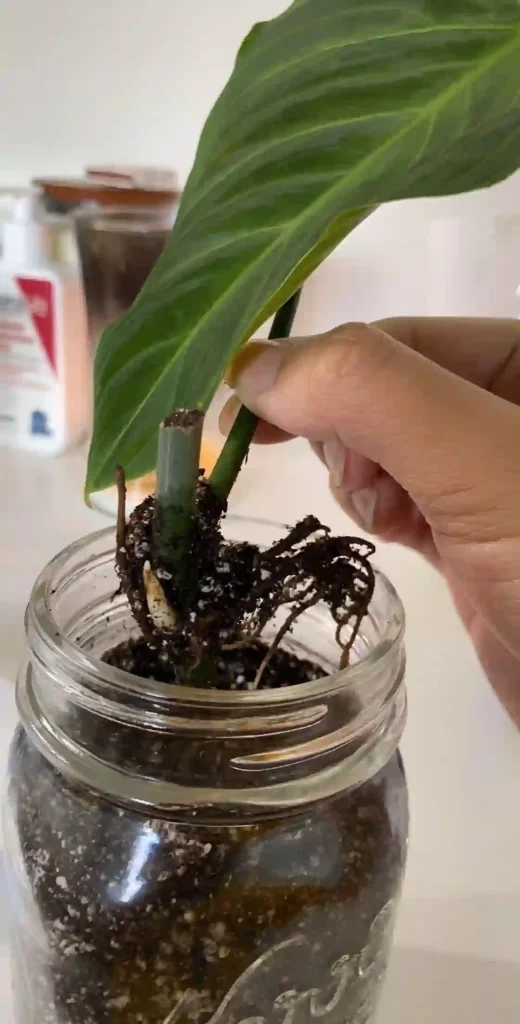
Following any of these procedures, you can easily increase the number of philodendron verrucosum plants to enrich your home garden and also to gift the beautiful plant to your near and dear ones who love plants.
Again, the above two methods (stem cutting or root division) can be done in two ways. They are
- Propagation in water.
- Propagation in soil.
Now, these common methods are described below to make the propagation system easily understandable to all.
Propagation of philodendron verrucosum in water
Step-1: Make a clean cut: At first, take a cutting below a node (where leaves and roots grow out of the stem) from a healthy plant and cutting must be done by using a pair of clean, disinfected, and sharp cutting scissors or knife.
Ensure that the cutting must contain at least one node and two leaves. You should keep in mind that the more nodes and leaves the better.
Step-2: Place the cutting into the water: Then, place the cut part into a water pot containing water at room temperature. Keep it in bright and indirect sunlight.
Ensure that the node is underwater and the leaves are out of the water. Keep changing the water about once a week.
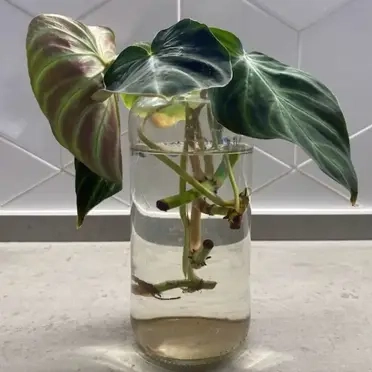
Step-3: Transfer it into the soil: When a two to three inches root starts to grow, transfer it into a soil pot containing suitable potting mix and water the plant once a week. The new pot also should keep in bright and indirect sunlight.
You should keep in mind that it may need some time to adjust to the transition from water to soil. So, you should start caring for the cutting like a normal plant.
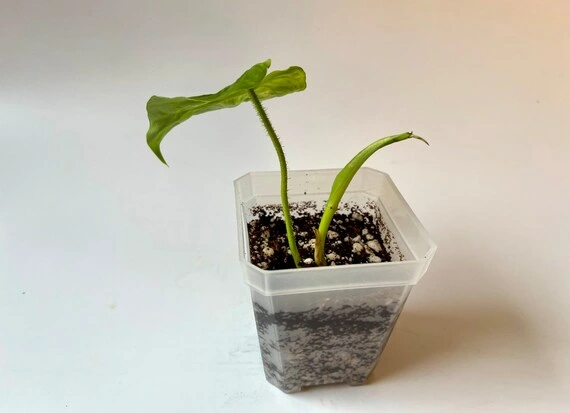
Propagation of philodendron verrucosum in soil
Step-1: Make a clean cut: At first, take a cutting below a node (where leaves and roots grow out of the stem) from a healthy plant and cutting must be done by using a pair of clean, disinfected, and sharp cutting scissors or knife.
Ensure that the cutting must contain at least one node and two leaves. You should keep in mind that the more nodes and leaves are better.
Step-2: Place it into the soil: Then place the cutting into a soil pot containing suitable potting mix instead of placing it into the water like water propagation.
Ensure that at least one node must be buried into the potting mix. But all the leaves should be out of the mix.
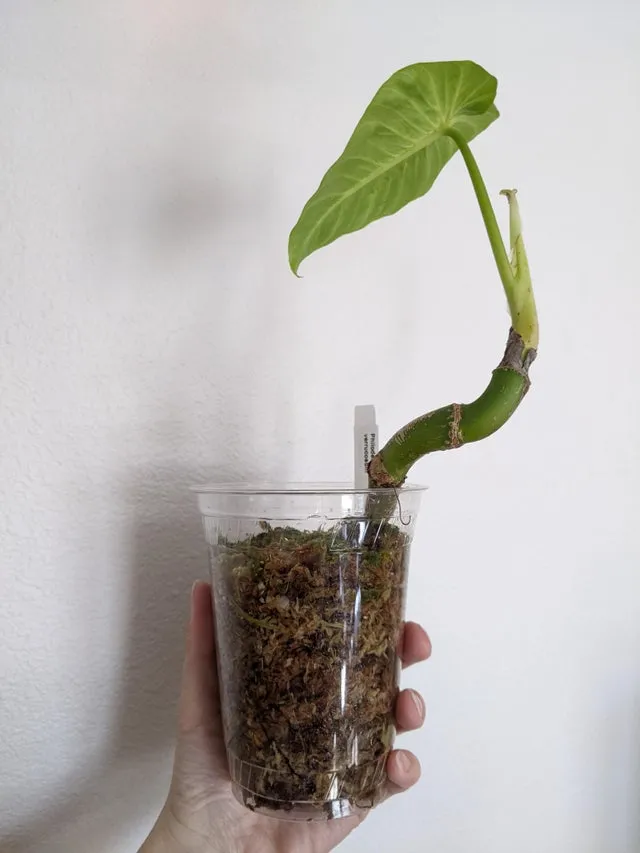
Step-3: Provide proper environment: Put the pot containing cutting in bright but indirect sunlight and keep the potting medium moist, but not soggy.
After a few weeks, observe the progress of your cutting and make sure that the soil should not dry.
When a root system develops, start treating your cutting like a normal plant. Then pot it up into a bigger and more permanent pot.
Precaution during propagation
Though the propagation of philodendron verrucosum is very simple and easy, some precautions have to be taken care of.
- The cutting scissors or the knife should be sharp enough to cut the stem from the knife smoothly.
- The cutting scissors or, the knife should be disinfected so that the cutting stem should not get affected by any kind of bacteria.
- The cutting stem has to be at least 5 to 6 inches long with a minimum of 2 or 3 leaves on it.
- The leaves should be removed from the bottom of the stem. It should not be removed from the top of the stem.
- The stem should be placed in the water in such a way that the exposed nodes will be under the water for rooting.
- The water used in the propagation should change at least once a week to give fresh water to the plant.
- We have to keep in mind that the soil used in the propagation should not dry out completely. So we should check and water the plant accordingly.
Tips to take care after propagation
Philodendron verrucosum needs very little ongoing care. Still, some special care should be taken to the newly potted verrucosum for proper growth and maturity. They are given below.
- Location with sunlight: Philodendron verrucosum needs uniform bright indirect sunlight to grow. So, if you grow them outdoors, you have to keep them away from direct, and excess sunlight to prevent sunburn.
Again, indoors, the plant has to keep to the brightest area like the sunny south-facing window.
- Types of soil: The well-draining, airy soil mixes are the best for philodendron verrucosum plants as they need good drainage.
- Water: Verrucosum is very sensitive to water. So we should take care of avoiding overwatering and underwatering depending on the environment and atmosphere.
- Temperature and humidity: Philodendron verrucosum can grow in regular household temperature and humidity, as they are epiphyte in nature, and humidity is not a requirement. But we should keep them away from extreme temperatures.
- Fertilization: Philodendron verrucosum does not need regular fertilization ( approximately thrice a year) during the spring and summer seasons as they grow faster and bloom in these seasons.
Besides, for foliage growth, we should use fertilizers that are high in nitrogen and when the blooming time comes, change the fertilizer containing a high amount of phosphorus for better blooming.
- Control pests: Sometimes few pests attack the healthy verrucosum plants and these are – whiteflies, mealybugs, scale insects, etc.
To control these pests, we should use insecticides or, neem oil or, or a mild soap water solution by spraying them on the plants.
- Control common problems: Though verrucosum grows very easily, it may face some problems or diseases like leaf drops, stem dieback, root rot, absences of flowers, etc. due to improper care and precautions.
To avoid these problems we have to take very special care and precautions for healthy and blooming plants.
Final thoughts
Gradually, you have reached the end of my details. Finally, we can see that the philodendron verrucosum is very easy to propagate. From the entire discussion, let’s recap what we get from this article.
- The philodendron verrucosum propagation system is undoubtedly a simple process as you need not gather much equipment.
- Besides, your home garden or room corner can also be decorated by the small-sized plants of philodendron verrucosum.
- You don’t need to give much attention to maintenance. But a pretty look will be provided in your room by their green glace.
Understanding all the points, you just need to take little care and precautions with the plant to avoid damage, choose the best one for yourselves, and have a delightful journey with a philodendron verrucosum plant.
Wait!! Wait!! You are reaching at the end of the article. You can also read our step-by-step propagation guide on Philodendron cordatum propagation

